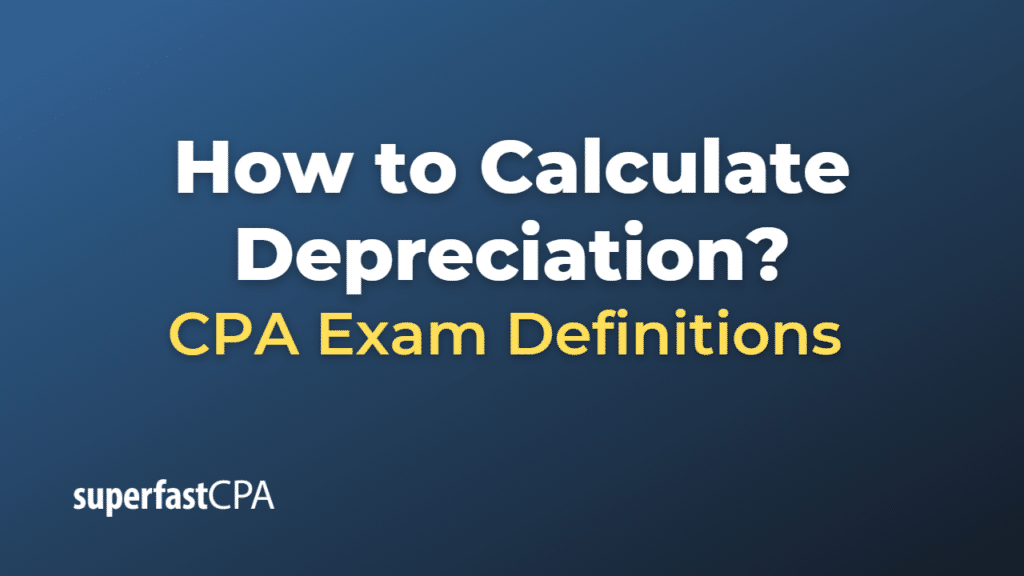How to Calculate Depreciation
Depreciation is a method of allocating the cost of a tangible asset over its useful life. Businesses depreciate long-term assets for both tax and accounting purposes. The common methods of calculating depreciation are straight-line, declining balance, sum of the years’ digits, and units of production.
- Straight-line Depreciation: This is the most commonly used and simplest method. Depreciation is the same for every year of the asset’s useful life.
Depreciation Expense = (Cost of Asset – Salvage Value) / Useful Life of Asset - Declining Balance Depreciation: This is an accelerated depreciation method. A constant depreciation rate is applied to the remaining book value of an asset, resulting in larger depreciation expenses in the early years of an asset’s life and smaller ones later.
Depreciation Expense = Book Value at Beginning of Year * Depreciation Rate - Sum of the Years’ Digits Depreciation: This is another accelerated depreciation method. It results in a larger depreciation expense in the early years of an asset’s life and smaller ones in the later years.
Depreciation Expense = (Cost of Asset – Salvage Value) * (Remaining Life of Asset / Sum of the Years’ Digits) - Units of Production Depreciation: This method bases the depreciation expense on the actual usage of the asset. In periods of high use, the depreciation expense will be higher, and in periods of low use, it will be lower.
Depreciation Expense = (Cost of Asset – Salvage Value) / Useful Life in Units of Production
Then, Depreciation Expense per period = Depreciation Expense per Unit * Units Produced in the Period
Remember that the appropriate method depends on the nature of the asset and the company’s operations. Also, bear in mind that different countries may have specific rules and regulations related to depreciation for tax purposes.
Example of How to Calculate Depreciation
Let’s take an example of a company that purchases a machine for $10,000. The machine has a useful life of 10 years and a salvage value of $1,000. Now, we’ll calculate the annual depreciation using the two most common methods: straight-line and declining balance.
1. Straight-line Depreciation Method:
The formula for straight-line depreciation is:
Depreciation Expense = (Cost of Asset – Salvage Value) / Useful Life of Asset
So in this case:
Depreciation Expense = ($10,000 – $1,000) / 10 years = $900 per year
This means the machine will depreciate by $900 each year for 10 years.
2. Declining Balance Depreciation Method:
For the declining balance method, you choose a depreciation rate. Generally, it’s twice the straight-line rate, but it can be any rate. Let’s use double the straight-line rate, so 20% per year. In this method, the salvage value is not considered in the depreciation calculation.
The formula for declining balance depreciation is:
Depreciation Expense = Book Value at Beginning of Year * Depreciation Rate
So in the first year:
Depreciation Expense = $10,000 * 20% = $2,000
In the second year, the book value of the machine will be $8,000 ($10,000 – $2,000), so:
Depreciation Expense = $8,000 * 20% = $1,600
This process continues for each of the 10 years. Remember that the book value of the asset should not fall below the salvage value.
Please note that these examples are simplified, and the actual accounting for depreciation can be more complex and may require adjustments, especially if an asset’s expected useful life or salvage value changes.













